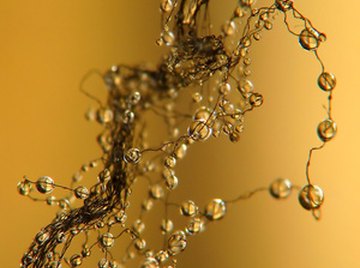
Gel electrophoresis, often also called DNA electrophoresis or simply electrophoresis, is a technique that is used to separate fragments of DNA (and other charged molecules) according to size. This is typically done using agarose gel and electric charge in order to separate fragments from each other.
This technique has a few applications including examining DNA, DNA fingerprinting, criminology and various medical applications as well.
What Is Gel Electrophoresis?
Gel electrophoresis is a technique that allows scientists to separate charged molecules according to size. This includes DNA, RNA and proteins.
Remember, DNA and RNA have a slight negative charge thanks to negatively charged oxygen molecules in the sugar-phosphate backbone of the molecule. Proteins can have a range of charges depending on the amino acids within the polypeptide chain.
Components of Electrophoresis
In order to perform electrophoresis, first the gel needs to be made. This can be done in almost any lab; agarose gels are most common. To make the gel, agarose powder is mixed with a special buffer called electrophoresis buffer. This mixture is then heated until the agarose is dissolved and fully mixed in the buffer solution.
Note that some electrophoresis protocols call for the addition of ethidium bromide (Et-Br). This stains any DNA used in electrophoresis to allow you to view the position of the fragments under UV light.
Molding the Gel
This is then poured into a rectangular mold called a gel casting tray. Along with the mold that creates the rectangular gel used for electrophoresis, a comb is placed at one of the ends of the gel. This comb makes the wells where the samples you wish to separate via electrophoresis are loaded. You can see a picture here.
Once the gel has hardened, the well comb is removed and the gel is placed into a special electrophoresis tank. Another buffer is filled in the tank until a slight layer of buffer completely covers the agarose gel.
This tank produces an electrical current (ranging from 50 to 150 V) through the buffer solution and, in turn, through the agarose gel. The wells of the agarose gel are placed at the negative end of the current (the cathode) with the other end of the gel at the positive end of the current (the anode).
How Does Electrophoresis Work?
Before the electric current is run through the tank and gel, your samples are loaded into the wells. This is done using a micropipette. A "marker" sample, also known as a DNA ladder, is a sample with known DNA fragment sizes that can help you compare your samples and understand the sizes of the sample you're testing.
Oftentimes a tracking dye (also called a loading dye) is added to each sample in order to help you load the sample into the wells. The dye also helps you track the movement of the samples through the gel.
So how do the samples actually move through the gel and separate by size? It has to do with the electric current that runs through the agarose gel along with the size/structure of the fragments and agarose gel.
Charge and Size Determine the DNA Bands
Remember that overall, DNA charge is negative . So when these samples are placed in wells that are close to the negative end of the electrical current, this will cause the negatively charged DNA to move away from the cathode (negative charge) and move towards the anode (positive charge) at the opposite end.
Besides this movement of the samples, electrophoresis also separates the samples and fragments in those samples by size. This is because smaller molecules and fragments can move faster and more easily through the gel while larger molecules and fragments move slower. This means that small fragments will move to the end of the gel more quickly than larger ones and, as a result, separates each fragment by size.
After the gel is run for about an hour (in most protocols), the charge is turned off and the gel is analyzed. You'll see a distinct rectangular band, often called the DNA band or protein band, at various points along the gel. Each band represents one fragment that has moved along the gel.
Applications and Uses of Electrophoresis
There are many applications for electrophoresis in the lab. Here are just a few:
- DNA fingerprinting for crime scenes and genetic testing
- Testing polymerase chain reaction products
- Analysis of genes for medical purposes
- Comparing DNA between species or progeny
- Analyzing evolutionary and taxonomical relationships between species
- Understanding where restriction enzymes cut different sections of DNA
- Paternity testing
- Testing antibiotic resistance
References
About the Author
Elliot Walsh holds a B.S in Cell and Developmental Biology and a B.A in English Literature from the University of Rochester. He's worked in multiple academic research labs, at a pharmaceutical company, as a TA for chemistry, and as a tutor in STEM subjects. He's currently working full-time as a content writer and editor.
Photo Credits
DNA image by Czintos Ödön from Fotolia.com
